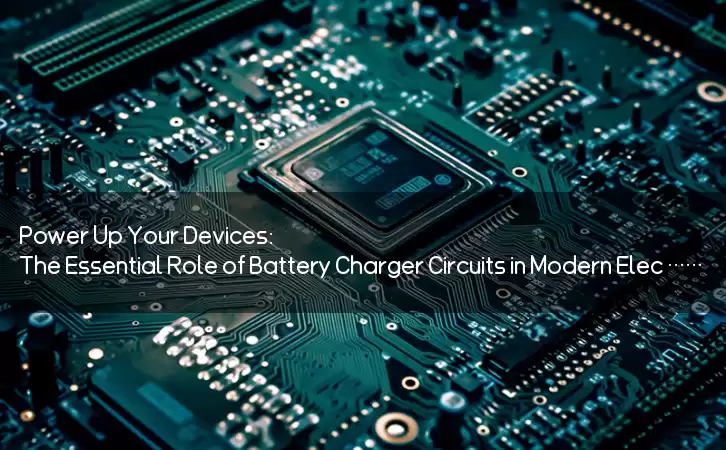Information Center
Power Up Your Devices: The Essential Role of Battery Charger Circuits in Modern Electronics
Published:2023-06-26 20:35:28 Author:Green WCND Views:35A battery charger circuit is an essential component of most electronic devices that rely on rechargeable batteries. Whether it is your cell phone, tablet, laptop, or any other device, they all need a reliable and efficient battery charging mechanism to keep going.

A battery charger is essentially an electronic device that is designed to charge rechargeable batteries by controlling the charging process. There are different types of battery chargers available in the market, including linear chargers, switch-mode chargers, and pulse chargers. However, the basic purpose of all these chargers is to prevent overcharging of the battery and to maintain a constant charging current to the battery.

The most common type of battery charger circuit is the linear charger circuit. A linear charger circuit consists of a power source, a charging circuit, a voltage regulator, and LEDs or other indicators that show the battery’s charging status. The basic principle of the linear charger circuit is to limit the charging current and voltage to the battery to prevent overcharging.
The switch-mode charger circuit is another type of battery charger circuit that is commonly used in various devices. A switch-mode charger circuit works by converting the input voltage to a high-frequency AC signal. This AC signal is then used to charge the battery at a much higher rate than the linear charger circuit. The switch-mode charger is more efficient than the linear charger as it uses less power and generates less heat.
Another type of battery charger circuit is the pulse charger circuit. The pulse charger circuit is based on the concept of pulse charging, which involves the application of a series of high-frequency pulses to the battery. This type of charger is useful when the battery is deeply discharged as it can restore the battery’s capacity more quickly.
When designing a battery charger circuit, it is important to consider various factors such as the type of battery, the charging time, the charging current and voltage, and the safety features. For example, some batteries require specific charging profiles to prevent damage. Also, the charging time and charging current should be optimized for the battery to prevent overcharging or undercharging.
In conclusion, a battery charger circuit is an integral part of modern electronic devices that rely on rechargeable batteries. Various types of battery chargers are available, including linear, switch-mode, and pulse chargers, each with unique features and benefits. When designing a battery charger circuit, it is important to consider various factors to ensure safe and efficient charging of the battery.
IntroductionGolf carts serve as vital transportation tools on golf courses, and their performance and reliability are crucial for enhancing player experience an···
The battery pack is the heart of a golf cart, silently powering every acceleration and climb on the green. However, battery degradation often goes unnoticed, mu···
The battery pack is the heart of a golf cart’s power system, yet maintaining it has long been a challenge for technicians. Traditional troubleshooting methods—···
For golf course managers, ensuring smooth and efficient operations is crucial for providing a memorable experience for golfers and maintaining the reputation of···





